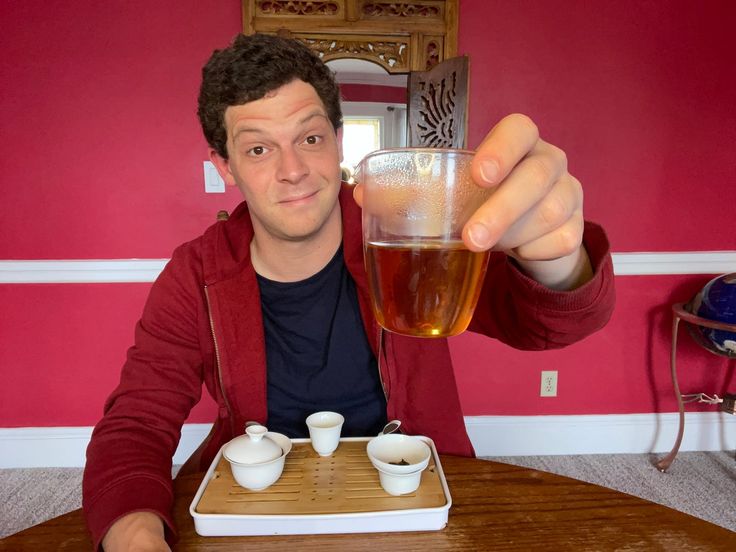
How To Get Started Making Gongfu Tea
Share
Hello tea friends! I’ve decided to start this tea blog to accompany newbies and old tea friends alike on their tea journey!
Each blog, I will cover a topic about tea drinking and tea culture. I consider myself an enthusiast, rather than any sort of “tea master.” Still, I hope that sharing my knowledge that I gained from my Chinese tea teachers will be of help to those that have joined my online teahouse community!
Tip 1: Know what “Gongfu Tea” is, and isn’t
Gongfu tea is the name of a tea tradition from Southern China. It involves using a tea table, lidded cup, and pitcher to make tea for the host, and, usually, other guests.
Gongfu tea is a style of teamaking, not a type of tea itself. Sometimes people ask me where they can buy Gongfu Tea, and the answer is that in some ways, any tea made in the gongfu style can be gongfu tea.
But what do you need to make Gongfu Style tea? That leads me to tip 2…
Tip 2: Know what’s on your Tea Table
A tea table is a key component of Gongfu Tea. It serves as the centerpiece of the experience for your guests, and provides a space to bring people together and inspire conversation.
A basic Gongfu Tea set will have a few key elements. First, a table of some sort to hold all the equipment – oftentimes with slats to allow water to drain through, or a hose attached to a waste water bucket.
These tables can vary from minimalist pieces of flat wood to giant stone tables carved out rocks the size of a car.
I remember the shock when I first saw one of the massive stone tea tables in Beijing, and I knew I wanted one and I would need a much bigger apartment than the one I lived in to enjoy it.
For equipment, there will be a gaiwan 盖碗, or lidded cup, which is the vessel used to steep the tea. There will be a serving pitcher, or gongdaobei 公道杯, which is used to collect the brewed tea and share with guests.
There will also be some form of tea cups – usually smaller than those we are used to in the West. Optionally, people might also have tongs for grabbing cups, bamboo slides for holding tea leaves, and other small instruments.
That covers the equipment – now what about the tea? That’s in tip 3…
Tip 3: Begin to learn Chinese tea classifications
Tea is grown all over the world, and is made in many different ways. That being said, because the style of teamaking comes from China, a lot of the culture that surrounds it lives in the “Chinese tea” worldview.
Chinese tea culture has what they call the “Liu Da Cha Lei 六大茶类” – six types of Chinese teas. These include green, red, white, black, yellow, and oolong.
These teas are all made from the same tea leaf – camellia sinensis – but are treated –or “processed” -- differently after picking. A tea’s type depends on this processing – process a leaf as “red tea”, and you get red tea.
This “Six Types” thinking also excludes some teas that are considered “tea” outside of China. For instance, most Chinese tea people only call teas made from the tea leaf “teas”, and so it would be unusual to make flower or herbal teas in the Gongfu style.
But does that mean you “couldn’t” make flower Gongfu tea? That leads me to tip 4…
Tip 4: There isn’t one “right way” to make Gongfu Tea
Part of what I loved about Gongfu Tea when I was learning from my tea friends at the Beijing Tea Market was that there isn’t one “right” way to do it.
Sometimes my tea teachers would use a pot to make the tea, instead of a lidded cup. Sometimes they would pour tea on tea pets, and sometimes not. Some would touch my cup with their hands, others used tongs.
There were also changes in the ceremony. All of my teachers felt that a key part of Gongfu Tea is being a gracious host. As such, they always had their eye on my cup, so as to never let it empty completely, and make sure there was always tea ready for me.
But past that, different people had different styles. One of my tea friends sits straight and proper, and makes the experience more of a meditative experience. Another will slouch around the chair and want to chat about the NBA.
Making teatime special for you and your guests means doing tea your own way. There’s no cultural police to come and arrest you for “doing it wrong.” My personal opinion is that any way of making teatime your own that is still respectful to the cultural underpinnings of the experience is a good thing.
I hope this was interesting and informative for everyone! If you want to get started with your own set, I highly recommend the one I put together with everything you need. And if you liked the blog, please let me know by leaving a comment!
Happy steeping, tea friends!
Your tea guy,
Jesse 杰西
